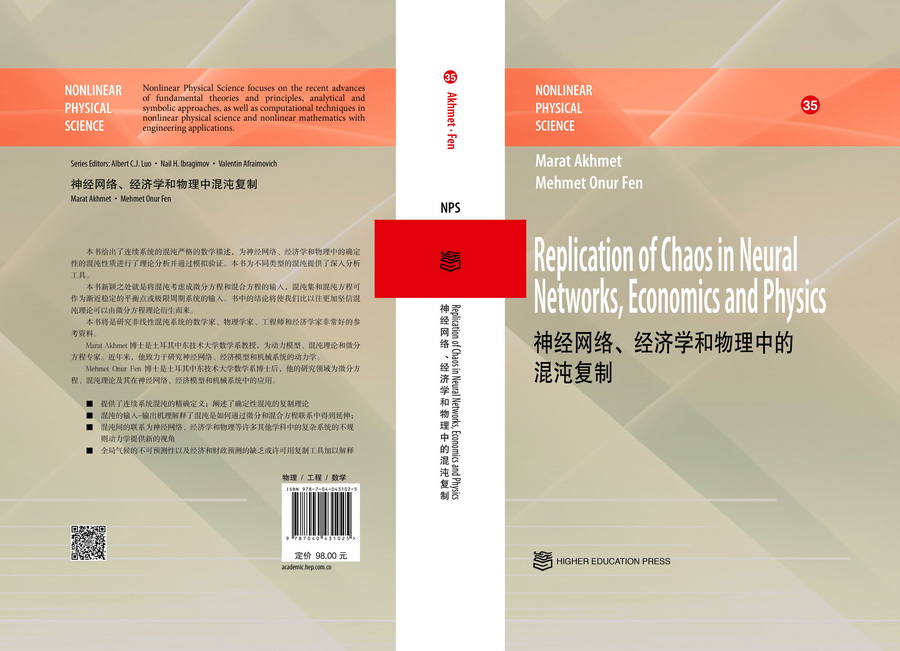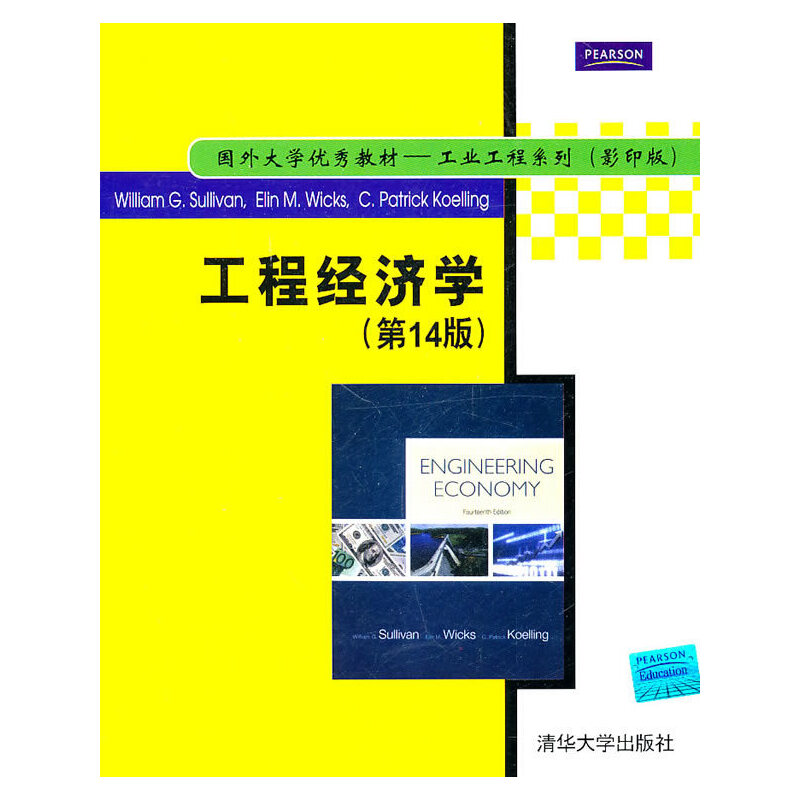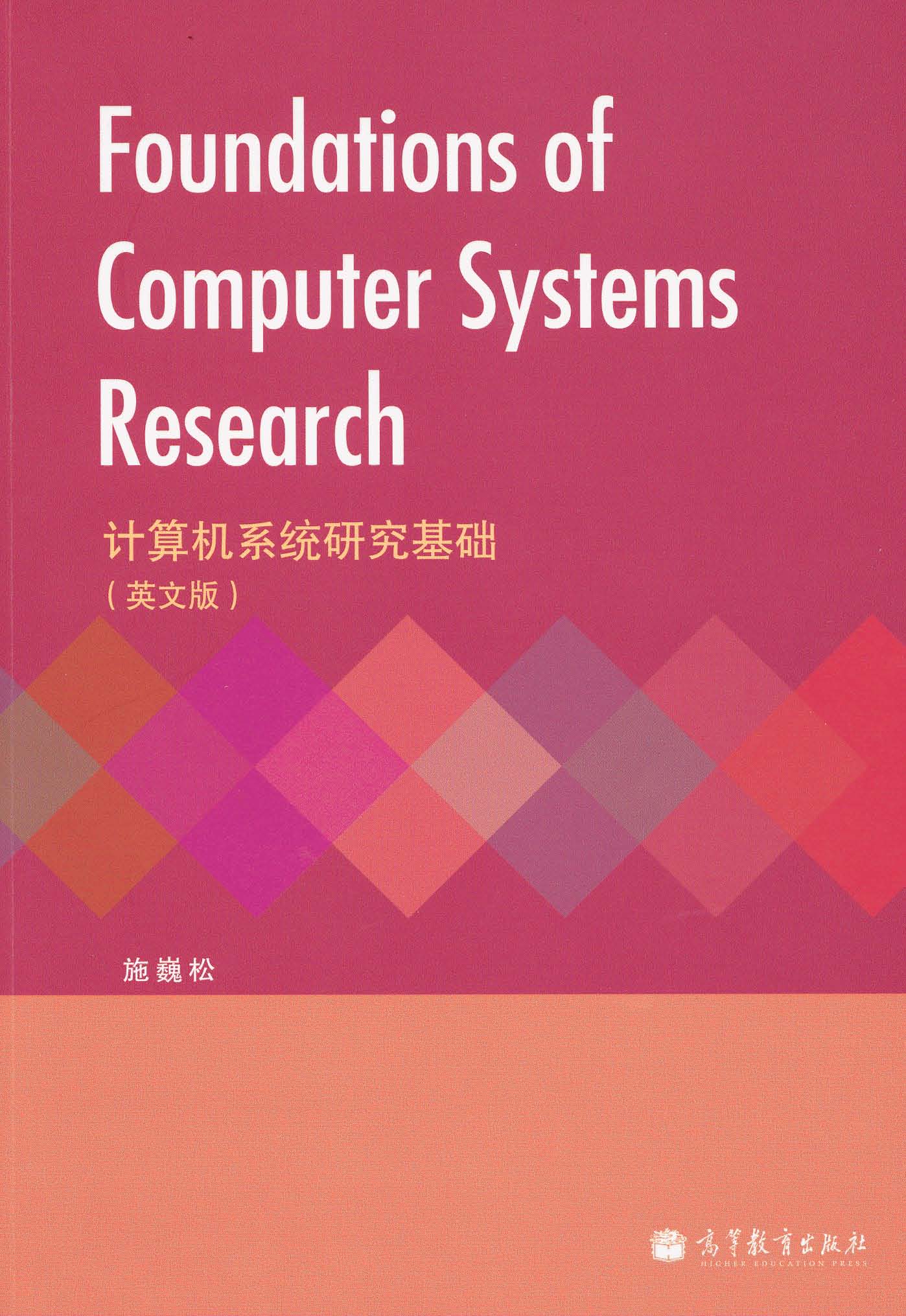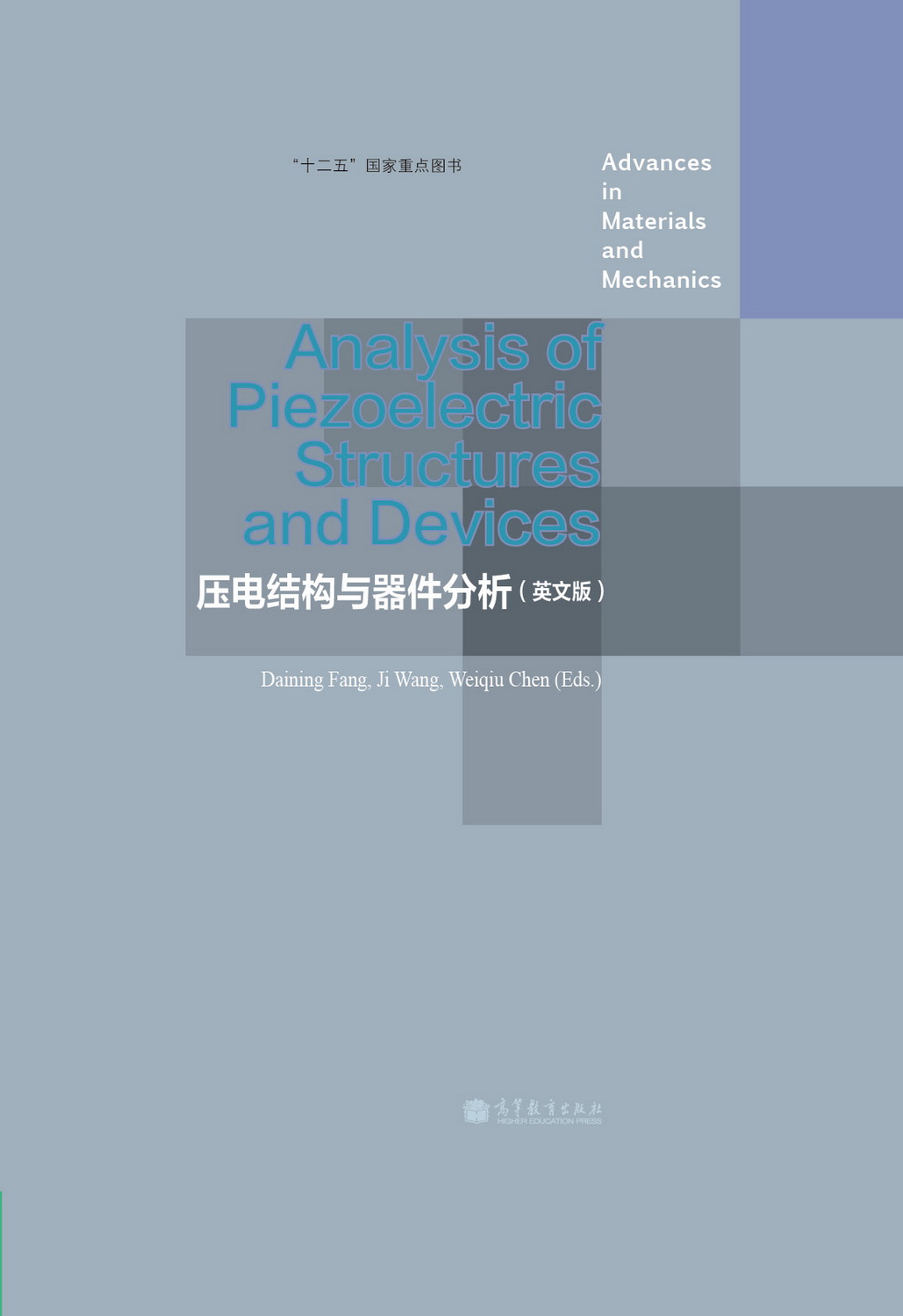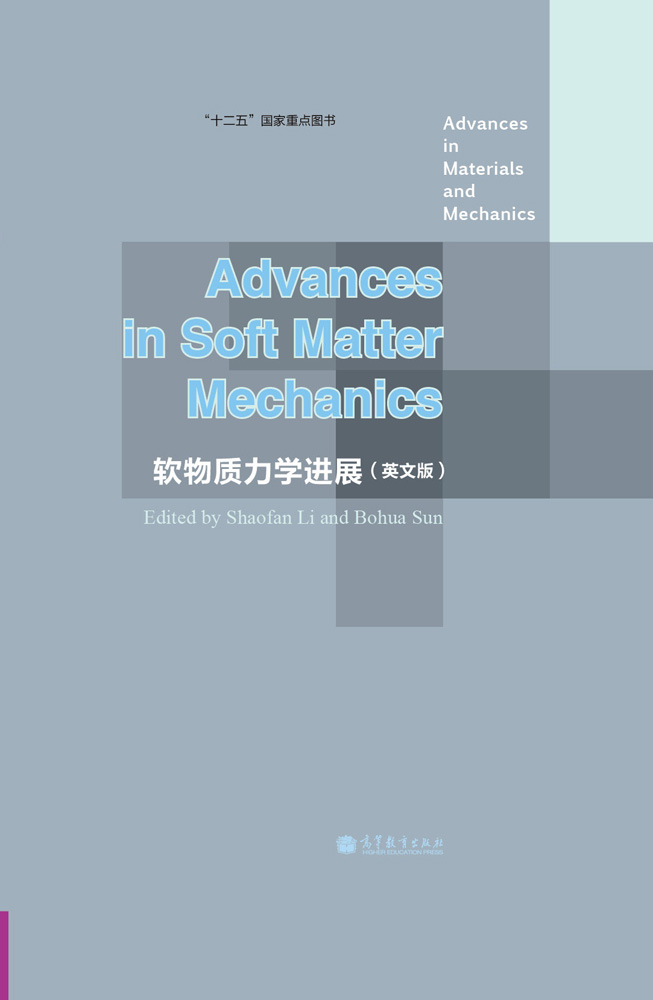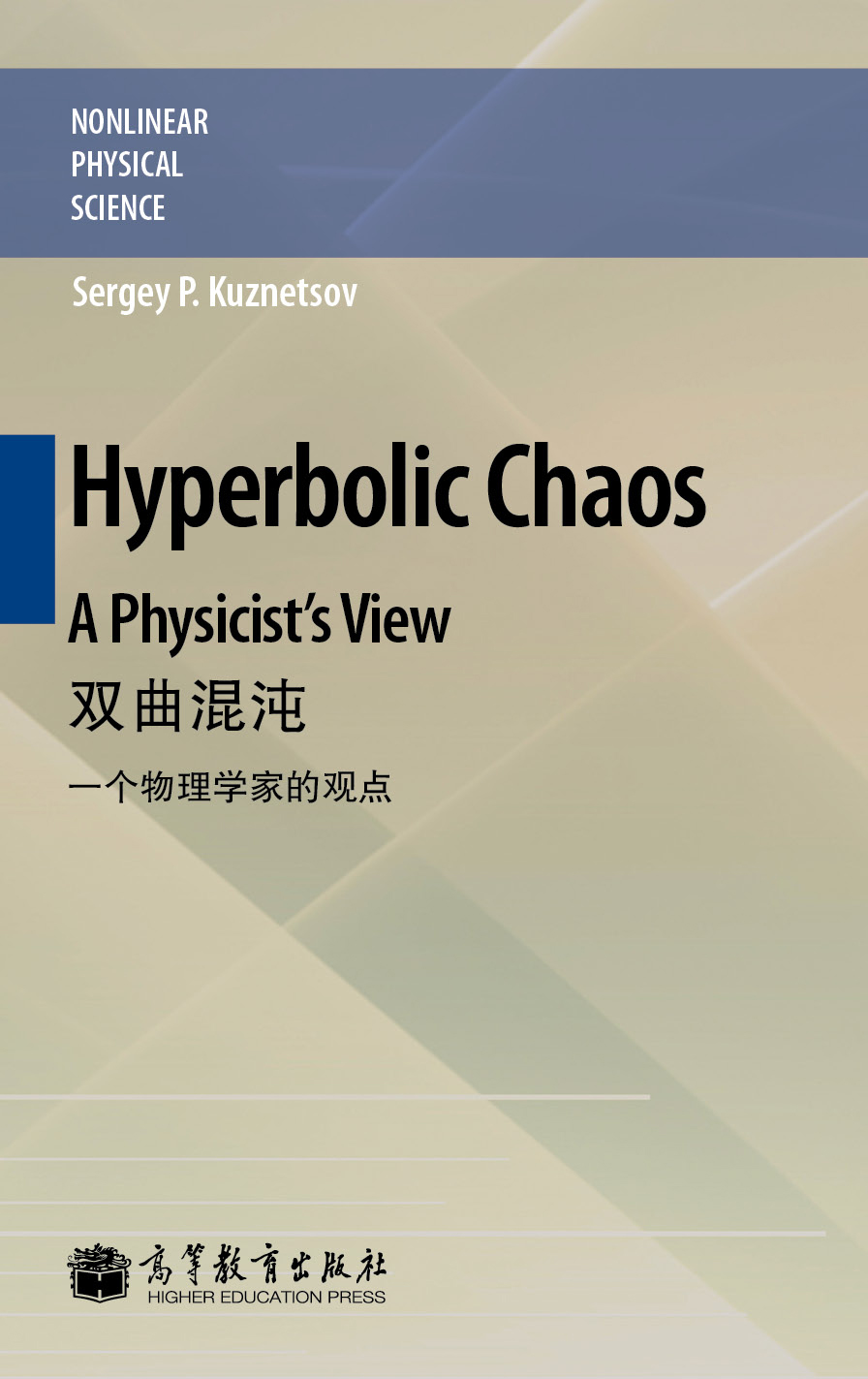神经网络、经济学和物理中的混沌复制(英文版)
作者: Marat Akhmet等
出版时间:2015-10
出版社:高等教育出版社
- 高等教育出版社
- 9787040431025
- 1版
- 135983
- 47255838-6
- 精装
- 16开
- 2015-10
- 410
- 457
- 理学
- 数学
- O415.5
- 数学类
- 研究生及以上
《神经网络、经济学和物理中的混沌复制(英文版)》给出了连续系统的混沌严格的数学描述,为神经网络、经济学和物理中的确定性的混沌性质进行了理论分析并通过模拟验证。本书为不同类型的混沌提供了深入分析工具。
本书新颖之处就是将混沌考虑成微分方程和混合方程的输入,混沌集和混沌方程可作为渐近稳定的平衡点或极限周期系统的输入。书中的结论将使我们比以往更加坚信混沌理论可以由微分方程理论衍生而来。
本书将是研究非线性混沌系统的数学家、物理学家、工程师和经济学家非常好的参考资料。
1 Introduction
1.1 Synchronization of Chaotic Systems
1.2 Control of Chaos
1.3 Neural Networks and Chaos
1.4 Extension of Chaos
1.5 Ordering Chaos
1.6 Self-organization of Chaos
1.7 Morphogenesis of Chaos
1.8 Chaos and Cellular Automata
1.9 Synergetics and Chaos
1.10 Mathematics in Chaos Theory
1.11 Chaos Theory and Real World
1.12 Organization of the Book
References
2 Repfication of Continuous Chaos About Equilibria
2.1 Introduction
2.2 Preliminaries
2.3 Chaotic Sets of Functions
2.3.1 Devaney Set of Functions
2.3.2 Li-Yorke Set of Functions
2.4 Hyperbolic Set of Functions
2.5 Replication of Devaney's Chaos
2.6 Extension of Li-Yorke Chaos
2.7 Morphogenesis of Chaos
2.8 Period-Doubling Cascade
2.9 Control by Replication
2.10 Miscellany
2.10.1 Intermittency
2.10.2 Shilnikov Orbits
2.10.3 Morphogenesis of the Double-Scroll Chua's Attractor
2.10.4 Quasiperiodicity in Chaos
2.10.5 Replicators with Nonnegative Eigenvalues
2.11 Notes
References
3 Chaos Extension in Hyperbolic Systems
3.1 Introduction
3.2 Preliminaries
3.3 Extension of Chaos
3.4 Simulations
3.5 Notes
References
4 Entrainment by Chaos
4.1 Introduction
4.2 Preliminaries
4.3 Sensitivity
4.4 Unstable Periodic Solutions
4.5 Main Result
4.6 Examples
4.7 Miscellany
4.7.1 Chaotic Tori
4.7.2 Entrainment in Chua's Oscillators
4.7.3 Controlling Chaos
4.7.4 Entrainment and Synchronization
4.8 The Regular Motion Near the Limit Cycle
4.9 Notes
References
5 Chaotifieation of Impulsive Systems
5.1 Introduction
5.2 Preliminaries
5.3 Chaotic Dynamics
5.4 An Example
5.5 Notes
References
6 Chaos Generation in Continuous/Discrete-Time Models
6.1 Devaney's Chaos of a Relay System
6.1.1 Introduction and Preliminaries
6.1.2 The Chaos
6.1.3 The Chaos on the Attractor
6.1.4 The Period-Doubling Cascade and Intermittency: An Example
6.2 Li-Yorke Chaos in Systems with Impacts
6.2.1 Introduction and Preliminaries
6.2.2 Main Results
6.3 Li-Yorke Chaos in the System with Relay
6.3.1 Introduction and Preliminaries
6.3.2 The Li-Yorke Chaos
6.4 Dynamical Synthesis of Quasi-Minimal Sets
6.4.1 Introduction
6.4.2 Main Result
6.4.3 A Simulation Result
6.4.4 Appendix
6.5 Hyperbolic Sets of Impact Systems
6.6 Chaos and Shadowing
6.6.1 Introduction and Preliminaries
6.6.2 The Devaney's Chaos
6.6.3 Shadowing Property
6.6.4 Simulations
6.7 Chaos in the Forced Duffing Equation
6.7.1 Introduction and Preliminaries
6.7.2 The Chaos Emergence
6.7.3 Controlling Results
6.7.4 Morphogenesis and the Logistic Map
6.7.5 Miscellany
6.8 Notes
References
7 Economic Models with Exogenous Continuous/Discrete Shocks
7.1 Chaos in Economic Models with Equilibria
7.1.1 Introduction
7.1.2 Modeling the Exogenous Shock
7.1.3 Mathematical Investigation of System(7.1.5)
7.1.4 Chaos in a Kaldor-Kalecki Model
7.2 Chaotic Business Cycles
7.2.1 Introduction
7.2.2 The Input-Output Mechanism and Applications
7.2.3 Economic Models: The Base Systems
7.2.4 Chaos in a Stellar of Economical Models
7.2.5 Kaldor-Kalecki Model with Time Delay
7.2.6 Chaos Extension Versus Synchronization
7.3 The Global Unpredictability, Self-organization and Synergetics
7.4 Notes
References
8 Chaos by Neural Networks
8.1 SICNNs with Chaotic External Inputs
8.1.1 Introduction
8.1.2 Preliminaries
8.1.3 Chaotic Dynamics
8.1.4 Examples
8.2 Attraction of Chaos by Retarded SICNNs
8.2.1 Introduction
8.2.2 Preliminaries
8.2.3 Li-Yorke Chaos
8.2.4 An Example
8.2.5 Synchronization of Chaos
8.3 Impulsive SICNNs with Chaotic Postsynaptic Currents
8.3.1 Introduction
8.3.2 Preliminaries
8.3.3 The Existence of Chaos
8.3.4 Examples
8.4 Cyclic/Toroidal Chaos in Hopfield Neural Networks
8.4.1 Introduction
8.4.2 Entrainment by Chaos in HNNs
8.4.3 Control of Cyclic/Toroidal Chaos in Neural Networks
8.5 Notes
References
9 The Prevalence of Weather Unpredictability
9.1 Introduction
9.2 Coupling Mechanism for Unpredictability
9.3 Extension of Lorenz Unpredictability
9.4 Period-Doubling Cascade
9.5 Cyclic Chaos in Lorenz Systems
9.6 Intermittency in the Weather Dynamics
9.7 Self-Organization and Synergetics
9.8 The Mathematical Background
9.8.1 Bounded Positively Invariant RegiOn
9.8.2 Unpredictability Analysis
9.8.3 Unstable Cycles and Unpredictability
9.9 Notes
References
10 Spatiotemporal Chaos in Glow Discharge-Semiconductor Systems
10.1 Introduction
10.2 Preliminaries
10.2.1 Description of the GDS Model
10.2.2 The Model in Dimensionless Form
10.3 Chaotically Coupled GDS Systems
10.4 The Chaos in the Drive GDS System
10.5 Notes
References


